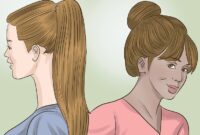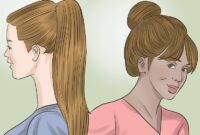How To Deep Condition Hair If You Are A Black Woman – smartesthairstyles.com – Deep conditioning seems easy enough, doesn’t it? You apply some conditioner, wait a few minutes, rinse and voila! Right? Not correct. Deep conditioning is essential when it comes to restoring moisture to our hair, but many of us only do so half-heartedly through no fault of our own.
- Deep moisturizing conditioning
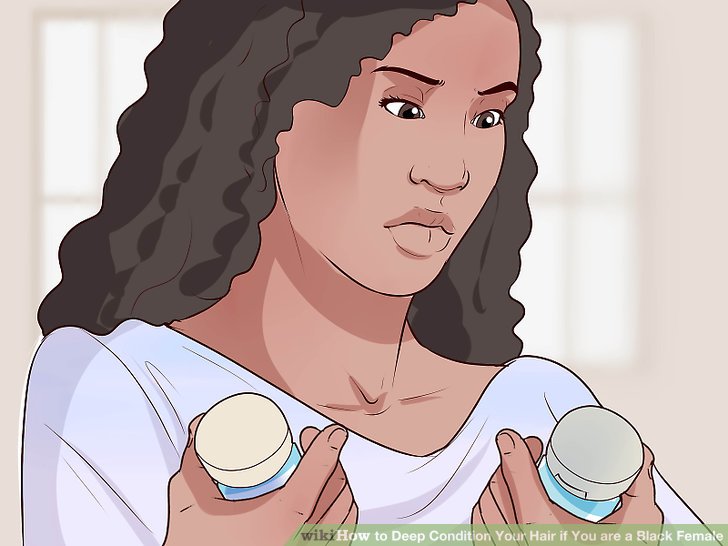
Choose a moisturizing conditioner. Moisturizing conditioner is ideal for most African hair, especially when hair is dry, brittle and breaks easily when brushed. (If hair stretches before breaking, see protein conditioning instructions below.) The “moisturizing” label on the front is a good start, but your best bet is to check out the ingredient list and directions:
Proteinaceous ingredients should be avoided in a moisturizing conditioner. These include amino acids, casein, cholesterol, collagen, keratin, oatmeal and panthenol.
If according to the instructions it should work for 2-5 minutes and then rinse out, it is not a deep rinse. Look for a product that should sit for at least 15-20 minutes.
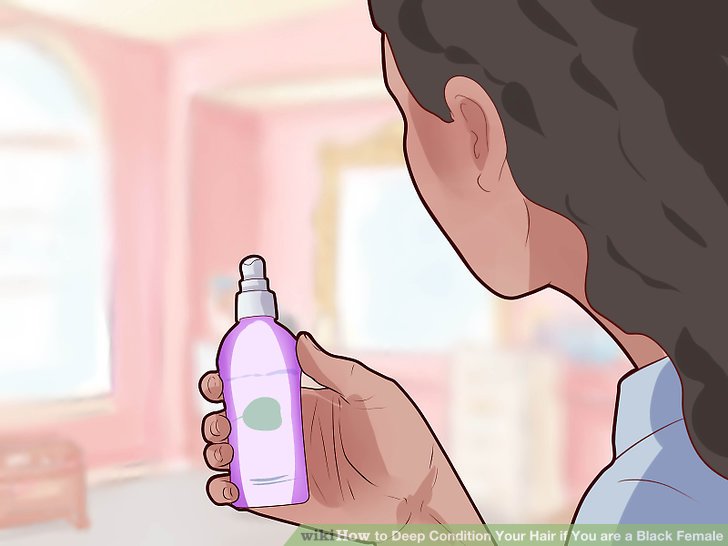
Purchase a leave-in conditioner. A leave-in conditioner will keep your hair in good shape between washes. Purchase one in addition to the other treatments you have selected.
A moisturizing leave-in conditioner is usually the best choice for African hair.
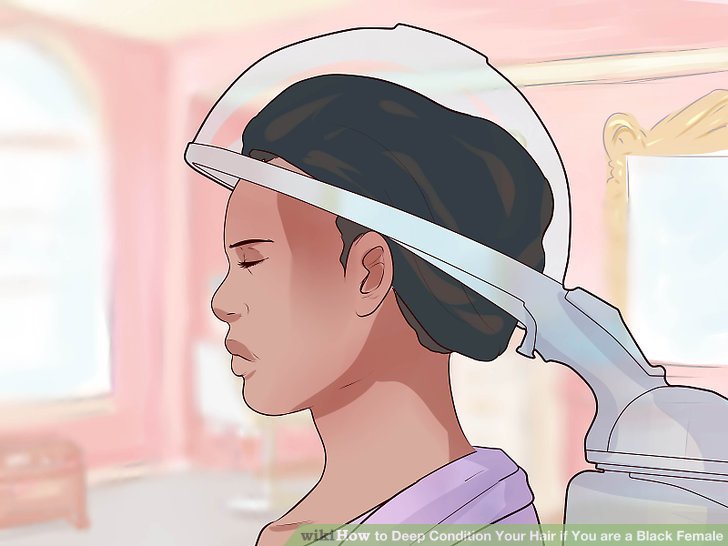
Consider a steam treatment. After choosing your product, decide what type of treatment you want to use. One option is a steam treatment, which lifts and opens up the hair strand’s cuticle, allowing your hair to absorb more conditioner. This is great for dry, brittle hair, but steaming more than two times a month can cause moisture fatigue. Here is a step-by-step explanation:
Wash your hair and gently squeeze it until it is damp but not soaking wet.
Rub in a deep conditioner. Concentrate on the ends, which are the weakest point, but also groom all the way to the roots. Do not apply to the scalp.
Sit under the hair steamer for a full cycle. If you don’t have one, wrap hair in a hot, wet towel and cover with a plastic bag or shower cap for 15-20 minutes.
Rinse out the conditioner with cold water. This recloses the cuticle and lays it flat to seal in conditioner and allow strands to slide past each other with minimal tangling. It also gives the hair a nice shine.
Apply a moisturizing leave-in conditioner and style the hair.
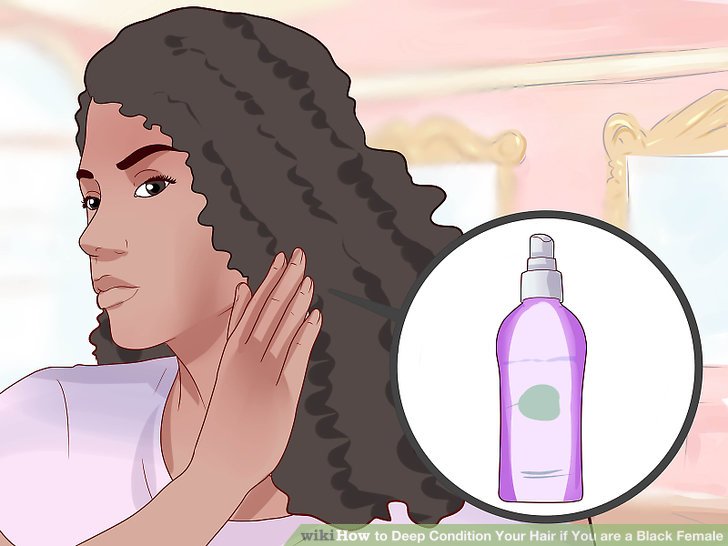
Instead, trap the heat overnight. Many people find this method uncomfortable, but it’s a good choice if you have dry, coarse, brittle hair. Also, this method can be used more frequently than steam treatment without causing damage. Apply as follows, starting late evening:
Wash and squeeze hair until damp.
Apply a moisturizing conditioner. Never use a protein-based conditioner as it can harden and break the hair if left on for longer than the label says.
Cover with the thermal cap. If you don’t have a thermal cap, use a plastic cap covered with a hat or bandana.
Sleep with your hat on.
Rinse with cold water in the morning and apply a moisturizing conditioner before styling.
- Restore protein with conditioner
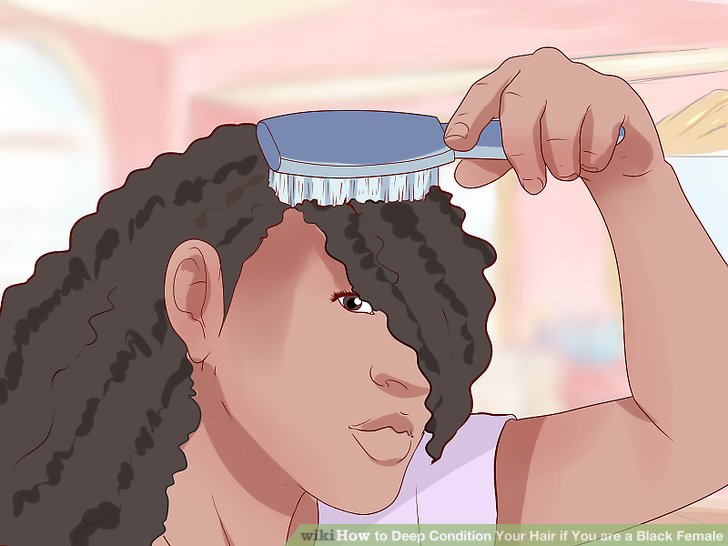
Check your hair thickness. Protein provides strength to damaged hair, especially hair that has been treated with relaxers, bleaches or other harsh chemical treatments. However, they can also dry out your hair. Brush your hair and watch the strands snap to find out if protein helps or hurts:
When your strands stretch and then break, you need more protein.
If your hair breaks easily without stretching, look for conditioners that do n’t contain protein.
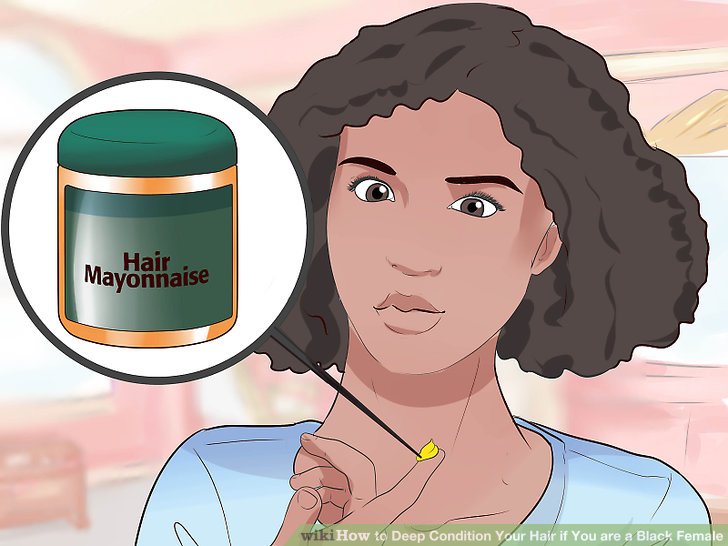
Find a protein deep conditioner. High-protein conditioners may be sold as “hair mayonnaise” or “protein conditioners.” Check the ingredients for a more accurate selection. Protein-enriched conditioner ingredients include amino acids, casein, cholesterol, collagen, keratin, oatmeal and panthenol. Of course, anything with the word “protein” in it is another good choice.
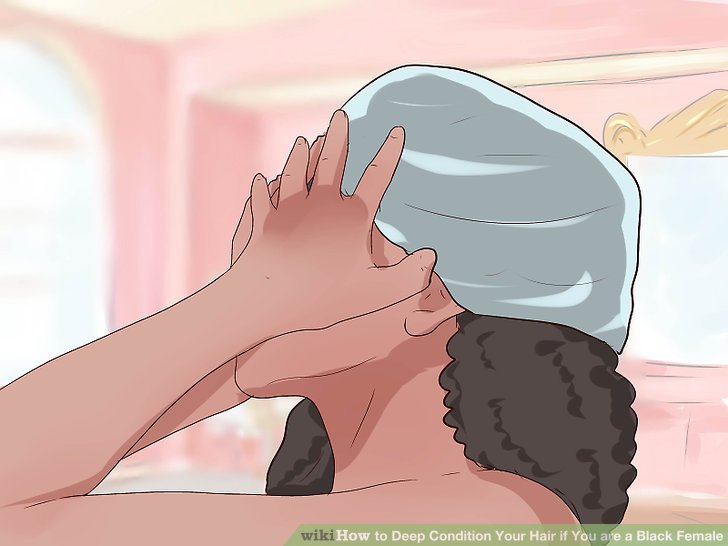
wet hair. Wash your hair and then gently squeeze it to remove excess moisture. Don’t rub with the towel, it may cause damage.
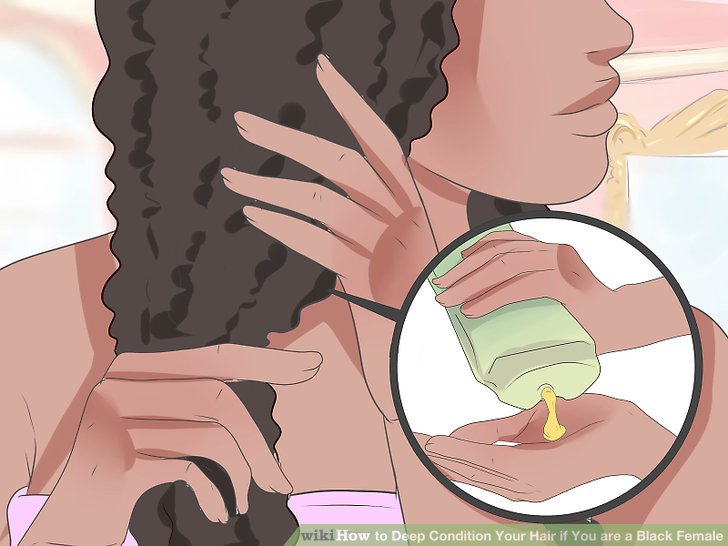
Apply the conditioner. Rub the product into your hair. The ends usually need to be strengthened the most, but rub to the roots as well. You don’t have to apply this to your scalp.
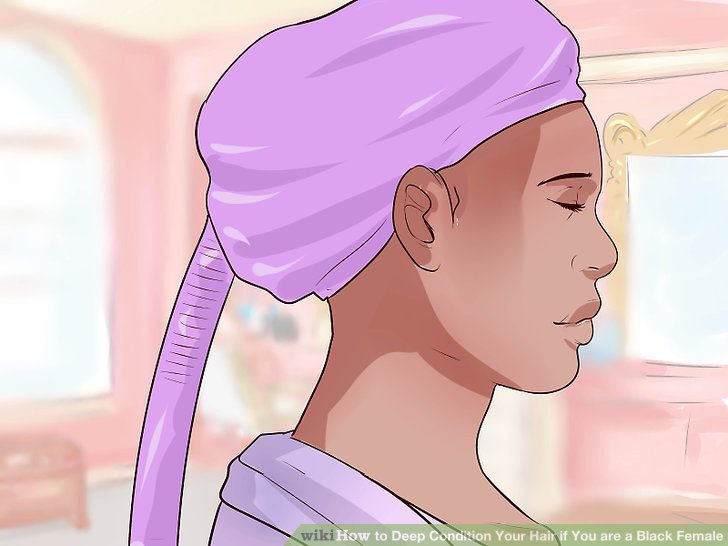
Heat with thermal hood or hood dryer. There are three different ways to “cook” a protein treatment into your hair:
Cover with a thermal cap.
Or cover with a plastic cap covered with a beanie or bandana. (This is essentially a homemade thermal cap.)
Or cover with a plastic cap and then place under a hood dryer. The plastic cap is necessary to avoid damage.
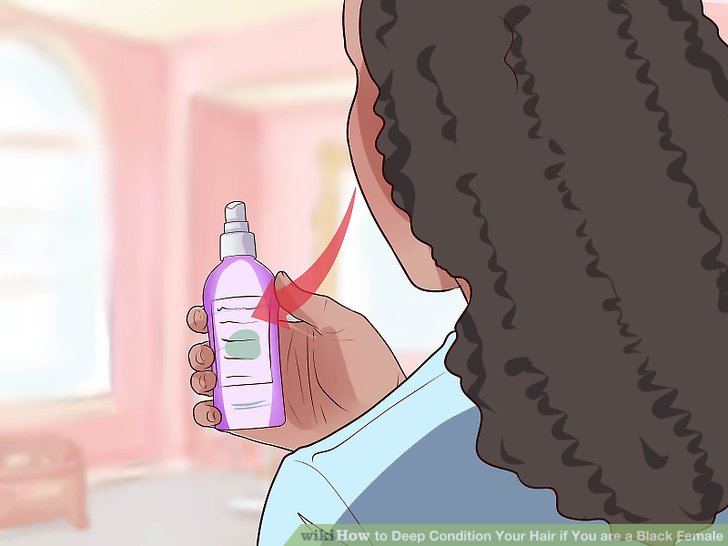
Leave on according to the instructions on the label. Always follow the directions that come with your protein treatment. Leaving it on for too long will result in harsh, brittle hair that defeats the purpose.
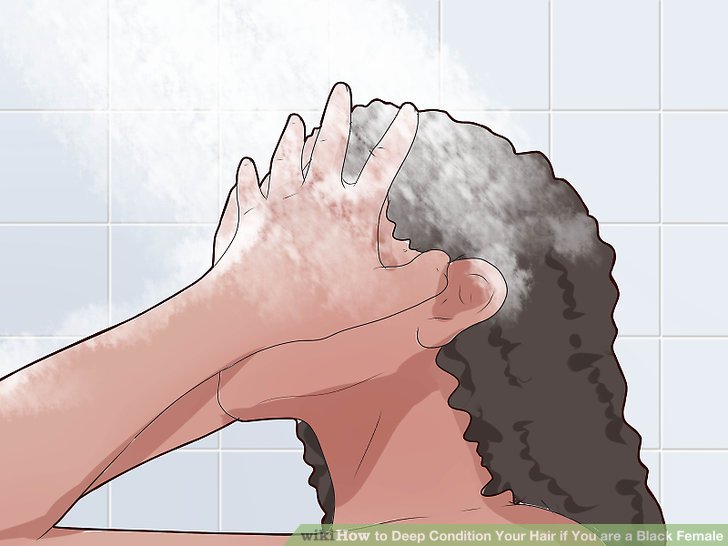
Rinse with cold water. Seal the product with a cold rinse.
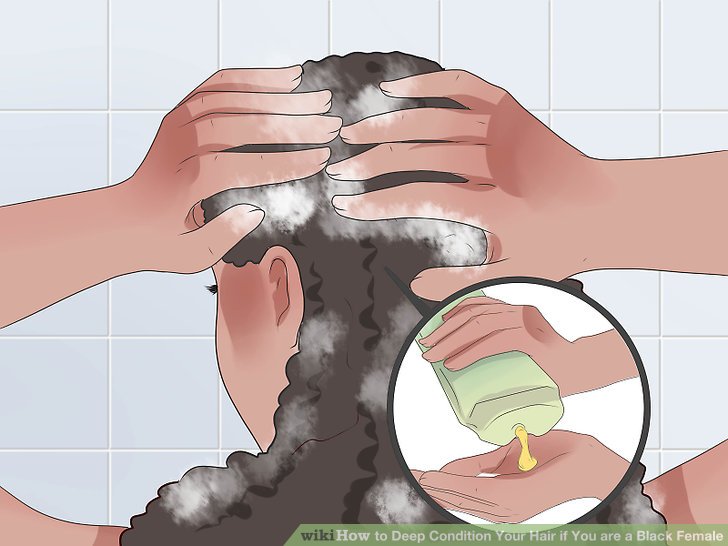
Finish with a moisturizing leave-in conditioner. Proteins can dry out your hair, so restore lost moisture with a moisturizing conditioner. Make sure this doesn’t contain protein.
- Natural deep conditioning
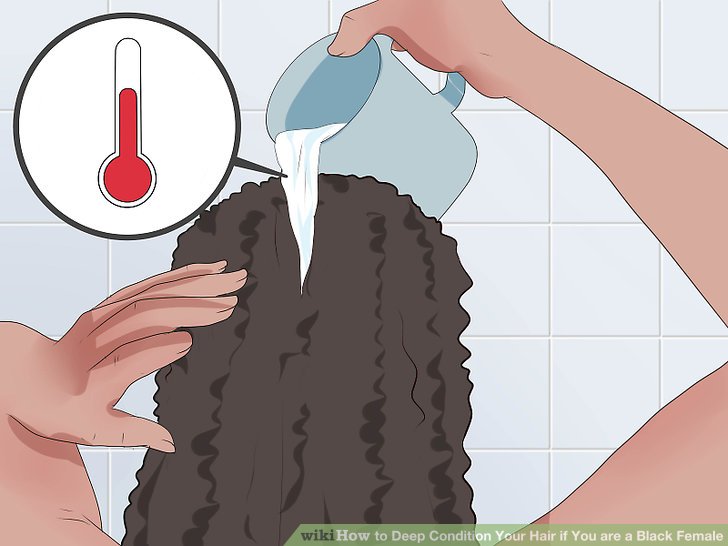
Wash your hair with lukewarm water. Hot water makes hair even more curly and unruly.
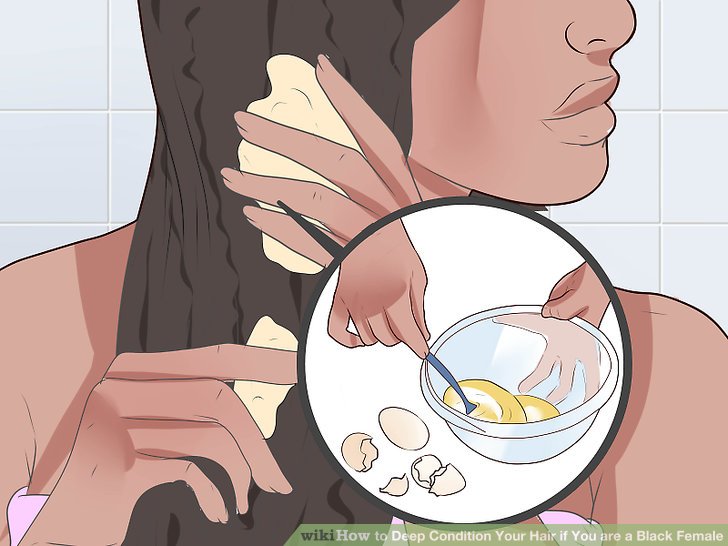
Let an egg sit in your hair. Beat the egg and then massage it in thoroughly. Cover your hair with a plastic bag or shower cap. Leave this on for about half an hour to provide your hair with essential nutrients. Wash the egg out of your hair.
Because eggs contain protein, this treatment may not be ideal for weak hair that stretches and breaks when brushed.
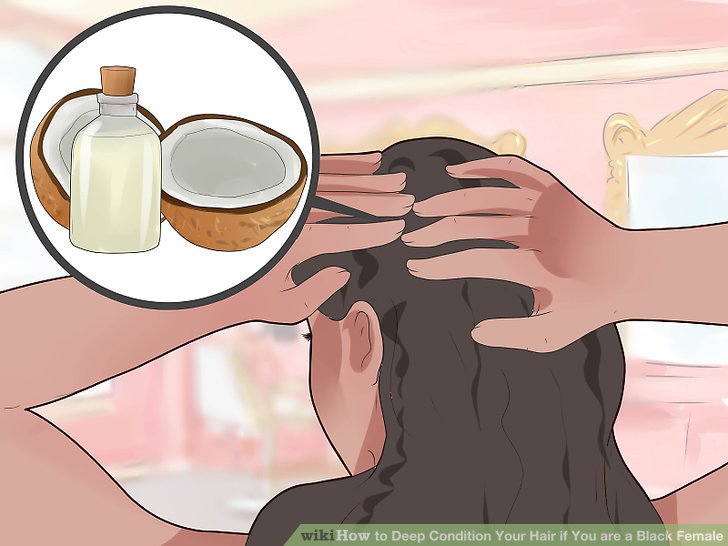
Massage in oil. You can use almost any vegetable oil, but coconut oil and jojoba oil are recommended. Pour in enough oil to fill about ¼ of a teacup (about ⅛ measuring cup or 30ml). Massage this into your hair, put the shower cap back on and move on to the next step. This will give your hair a healthy, supple texture.
You can use sunflower oil or other cooking oils, but these can smell bad.
You can even use an avocado if you don’t have oil.
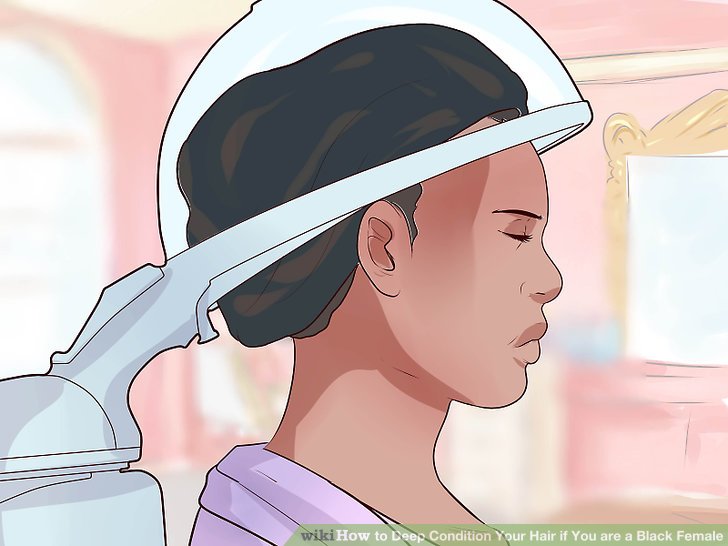
Steam the hair. This will ‘cook’ the oil into your hair, restoring shine and flexibility. In the salon all you have to do is sit under the dryer. At home, sit in a chair and hang your head, hair back, over a bucket of boiling water. In any case, this takes about 30 minutes.
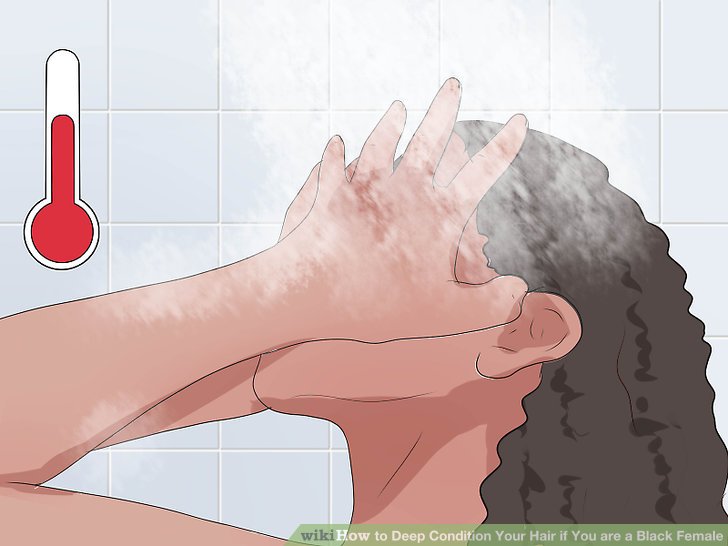
Rinse with warm water. Add a few drops of vinegar to the water to reduce dandruff.
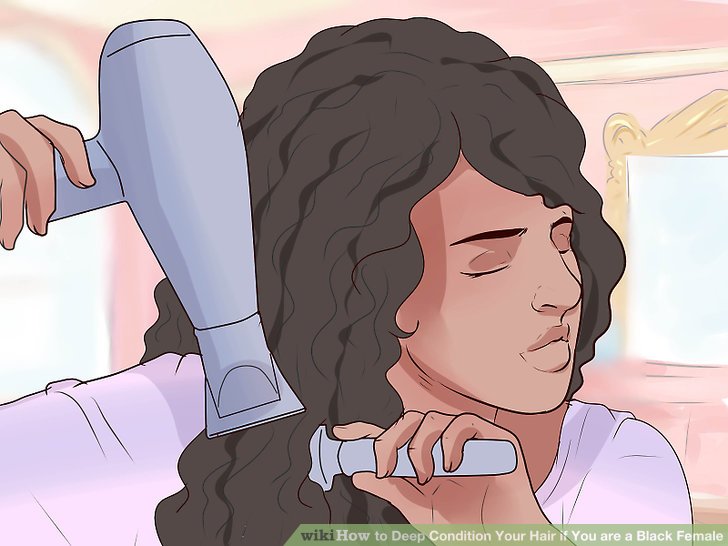
blow dry To dry African hair you need a low heat setting so the hair doesn’t become brittle. To dry quickly and effectively, section your hair into several segments. For each segment, comb and blow dry one strand of hair at a time. Complete the entire segment before moving on to the next.
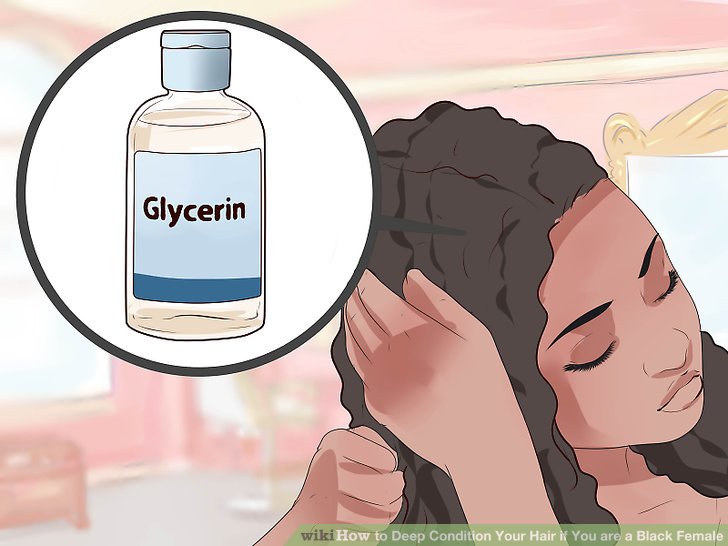
Oil the hair with glycerin. Glycerin is the cream of the crop when it comes to African hair. This final step protects your hair from breakage. What you end up with is a head full of fluffy, shiny, tangled hair!
Braid your hair afterwards to help it grow.

